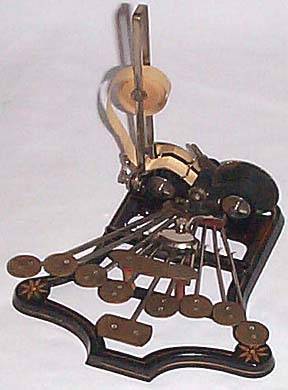 Part One
Part One
Hearing about the new Gallery of Shorthand opening and learning about all of the great exhibits housed there has whetted our appetite for more! And, who would have thought, there is a lot of very interesting facts, trivia and photos out there that we want to bring to you as an on-going blog. Bear in mind that most (if not all) of this is most likely on display or documented at the Gallery of Shorthand. But, until we all get there to visit, this will have to do!
The Basics
In this installment of “Speaking of Shorthand” we’ll start by giving you the basics…like the official definition of shorthand.
Definition
According to the Encyclopedia Brittanica, shorthand has been described as “any system of rapid writing using symbols or shortcuts that can be made quickly to represent letters of the alphabet, words, or phrases. The Oxford English Dictionary describes it as “a method of speedy writing by means of the substitution of contractions or arbitrary signs or symbols for letters, words, etc.”
Other Defining Terms and Approaches
Okay, we have the definition, now for some other terms used:
– brachygraphy (1590) – short writing from the Greek work meaning “short”
– stenography (1602) – narrow or small writing from the Greek word meaning “narrow”
– tachygraphy (1641) – swift writing from the Greek word meaning “swift”
Principal Approaches
– orthography – systems based on the way words are spelled
– phonography – systems based on the ways words sound or are pronounced
The early shorthand systems used the orthography approach. During the 18th Century and to this day, phonography is the most prevalent form. But, let’s leave the modern era for a future blog and go back to the beginning when the need for a system of rapid handwriting was first developed.
Shorthand, The History
Ancient Greece: The earliest know indication of a shorthand system was found in the Parthenon on a stone dating from the mid-4th century BC (source Wikipedia). The stone is a marble slab and shows a writing system based on vowels using modifications to indicate consonants.

Hellenistic Tachygraphy: Originally reported from the 2nd century BC onwards, but there are recent indications that it may be older. This style consisted of word stem signs and word ending signs.
Middle Egypt: The oldest datable reference is a contract stating that Oxyrhynchos gives the “semeiographer” Apollonios saying that he will be taught shorthand writing!
Ancient Rome: Marcus Tullius Tiro (103-104 BC), originally a slave and then later a freed man servant of Cicero’s, developed the Tironian notes (or Notae Tironianae) so that he could write down Cicero’s speeches. This system consisted of Latin word stem abbreviations and of word ending abbreviations. The original Tironian notes had about 4,000 signs. New signs were added over time and the number most likely increased to around 13,000. This was becoming too complex and the system morphed into a syllabic script.
According to historical records, when Rome fell, so did the Tironian notes…for the Romans that is. It was still used in Europe in varied forms until the Middle Ages in monasteries where many long-forgotten manuscripts were discovered.
China: In the Han Dynasty (207BC – 220 AD), two methods of rapid writing were created – xingshu (running script) and caoshu (grass script). The main difference between the two scripts was that in the xingshu, some of the character strokes are joined and some are left out. Whereas in the caoshu, each character is written with a single continuous stroke and thus there is a huge amount of variation in the writing thus making it very difficult to read.
England: Towards the end of the 16th century, there was a resurgence in the interest of shorthand. In 1588, Timothy Bright published his book, Characterie: An Arte of Shorte, which introduced a system with 500 symbols, each representing one word. Bright’s book was followed by many others, most notably, John Willis’s Art of Stenography (1602), Edmond Willis’s An Abbreviation of Writing by Character (1618) and Thomas Sheton’s Short Writing (1626) which was later re-issued as Tachygraphy.
Let’s stop here for now as we are entering the modern age where things get really interesting and happen quickly!
As always, if you have any comments or additions, we’d love to hear them!